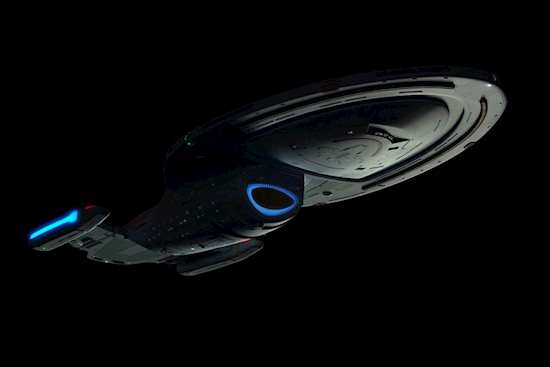Fantasy Science Pt. 14: Aeroponics & STAR TREK VOYAGER
Space travel. Light speed. Aeroponics. Have you heard terms like these flying around the science fiction sections of the film world? Have you ever wondered just how accurately these films portray real science? Well, my friends, today is your lucky day: this column, Fantasy Science & Coffee, aims to bridge the gap between science and science fiction in films and popular culture. My hope is to explain things in a fun way – like we’re chatting over coffee.
You may be thinking: who is this person, why does she think she can explain science, and why the heck would I want to have coffee with her? Well, I’m Radha, a researcher in India, currently pursuing a PhD in theoretical quantum physics. I quite like hot beverages. I’ll also pay.
In this fourteenth part of the series published on the second and fourth Tuesdays of every month, we are going to look at what was used as an alternative to replicators on the USS Voyager. Let’s begin.
Aeroponics in Star Trek Voyager
A staple of science fiction is space travel, and along with space travel comes the challenge: where will the crew members get their nutrients from on long missions? One of the coolest food preparation mechanisms in the Star Trek universe is the replicator, a machine that inorganically materializes dishes. It, admittedly, isn’t the best choice for nutrition. Neelix, Chef (among other things) on the USS Voyager, often talks about how healthy and tasty fresh grown food was as compared to replicated food.
A number of Starfleet vessels in the Star Trek universe grow their own organic food as a healthy alternative to their replicators. The aeroponics bay on the USS Voyager is one such example, and was developed by the character Kes. Not only did it provide the crew with fresh produce, it lessened some of the energy load on the replicators.
The really cool thing about the aeroponics bay is that it isn’t based on a fictional notion at all, and is in fact being explored as a viable food source in our own future of space exploration.
Aeroponics in Real Life
Aeroponics is an alternative to geoponics – traditional growth of plants in soil. Instead of using soil and pesticides, the plants are suspended in a closed or semi-closed sanitized environment, free from pests.
The roots of the suspended plants in these controlled environments are sprayed with an atomized, nutrient-rich solution. The solution is similar to that used in hydroponics, in which plants are suspended in the solution rather than air. The advantage of the spray over suspension in the solution itself is that it requires much less water. However, hydroponics systems are usually kept as a backup in case the aeroponics apparatus fails. Shots of Voyager’s aeroponics bay also show a few hydroponic systems, possibly supplementing the aeroponic systems.
NASA heavily dabbles in aeroponics experimentation because of its huge implications for space exploration. Much like it being the source of a crew’s nutrition on a Starfleet vessel, aeroponics will likely be the agricultural system of choice for missions like the Mars mission. Early experiments conducted at NASA in 2007 show reduction of water usage by 98 percent, fertilizer usage by 60 percent, and pesticide usage by 100 percent, all while maximizing crop yields. The plants were also found to have absorbed more vitamins and minerals, thereby making them healthier — something Neelix would definitely vouch for!
One of the major contributors to NASA’s aeroponics research is the father of commercial aeroponics: Richard Stoner. In 1983, his company, GTi, manufactured and marketed the first commercially available aeroponic apparatus: the Genesis Machine. The name was inspired by Project Genesis from Star Trek (Star Trek II: The Wrath of Khan), a scientific research project with the goal of developing a process to make uninhabitable planets suitable for humanoid life. Stoner received funding from NASA in the late 1990′s to develop a high performance aeroponic system for earth and space.
Many of Stoner’s findings are being implemented by NASA, and the International Space Station currently has a program that researches and grows food on board. Astronauts Don Pettit and Mike Massimino talk about how food is grown on the ISS in a really cool InsideISS video:
(By the way, Don also has an adorable must-read account of growing a zucchini: Diary of a Space Zucchini. )
It’s safe to say that when we actually get around to heading off to Mars, we’ll have nutritious stuff to eat on the journey there.
What do you think of aeroponics being used for long-haul space flights? What other interesting starship food sources can you think of in science fiction?
More to Explore:
Articles
The Verge: How NASA is learning to grow plants in space and on other worlds (2018)
NASA Mission Pages: International Space Station – Vegetable Production System (Veggie) (2018)
NASA: Progressive Plant Growing is a Blooming Business (2007)
Diary of a Space Zucchini: Astronaut Don Pettit grew zucchini on the ISS (2012)
Papers
IOSR Journal of Computer Engineering: Aeroponic Based Controlled Environment Based Farming System (2015)
Robot Intelligence Technology and Applications: Aeroponic Greenhouse as an Autonomous System Using Intelligent Space for Agriculture Robotics (2014)
Resources
Modern Farmer: How does aeroponics work?
NASA: Inflatable Aeroponic System
Opinions expressed in our articles are those of the authors and not of the Film Inquiry magazine.
Source: www.filminquiry.com

